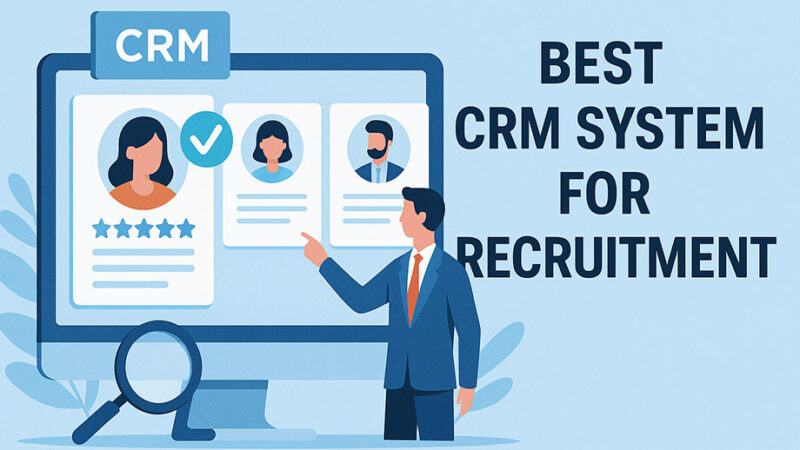15 Small Business B2B Lead Generation Hacks That Cost Almost Nothing
Small businesses face unique challenges in B2B lead generation: limited budgets, small teams, and fierce competition from larger companies with deeper pockets. However, resourceful entrepreneurs have discovered creative ways to generate high-quality leads without breaking the bank.
These proven hacks leverage creativity, persistence, and smart thinking over expensive tools and massive ad budgets. Each strategy can be implemented with minimal investment while delivering measurable results for growing B2B companies.
Why Small Businesses Need Different Lead Generation Approaches
Traditional B2B marketing often assumes substantial budgets for paid advertising, expensive software, and dedicated marketing teams. Small businesses must think differently, focusing on:
- Maximum ROI from minimal investment
- Personal relationships over mass marketing
- Creative approaches that larger competitors overlook
- Leveraging existing resources in new ways
- Building sustainable systems that scale gradually
1. The “Problem Alert” Email Hack
Monitor your prospects’ industries for problems your services solve, then reach out with helpful solutions before they even realize they need help.
How to Execute This Hack
Set up Google Alerts for keywords related to common problems in your target industries. When news breaks about regulatory changes, market shifts, or industry challenges, immediately craft helpful emails to prospects who might be affected.
Real-World Example
A cybersecurity consultant monitors alerts for “data breach” and “ransomware.” When attacks hit companies in his target industries, he sends helpful resources about prevention strategies rather than sales pitches. This positions him as a helpful expert when those companies inevitably need security upgrades.
Implementation Tips
- Focus on providing value first, not selling
- Send emails within 24-48 hours of relevant news
- Include specific, actionable advice
- Follow up with additional resources over the following weeks
2. The “Competitor Mention” Strategy
Find prospects who mention your competitors online, then engage with valuable insights and alternative solutions.
Setting Up Your Monitoring System
Use free tools like Google Alerts, Twitter search, and Mention.com to track when prospects discuss your competitors. Look for complaints, questions, or general discussions about solutions in your space.
Crafting the Perfect Response
Don’t bash competitors or immediately pitch your services. Instead, provide genuinely helpful insights about the challenges they’re discussing. This builds trust and positions you as a knowledgeable alternative.
Advanced Tactics
- Monitor review sites where prospects discuss competitor experiences
- Join industry forums where these conversations naturally occur
- Create content that addresses common competitor limitations
3. The “Reverse LinkedIn” Cold Email Approach
Research prospects on LinkedIn without connecting, then reach them through email with personalized messages based on their professional updates.
Research Methodology
Browse prospects’ LinkedIn profiles to find recent job changes, company milestones, industry awards, or posted content. Use this information to craft highly personalized emails that demonstrate genuine interest in their business.
Email Template Framework
Start with a specific reference to something you noticed about their business, acknowledge a recent achievement or challenge, then offer a relevant resource or insight. Avoid mentioning LinkedIn directly to maintain the impression of organic research.
4. The “Local Business Networking” Gold Mine
Small businesses often overlook local networking opportunities that can generate surprising B2B leads.
Identifying Hidden Opportunities
Look beyond obvious business networking groups to find unexpected prospects. Chamber of Commerce events, charity fundraisers, and community initiatives often attract business decision-makers in relaxed environments.
The Strategic Volunteer Approach
Volunteer for committees or causes that attract your target clients. This creates natural conversation opportunities and demonstrates your community involvement, building trust before any sales discussions occur.
Maximizing Event ROI
- Research attendee lists beforehand when possible
- Prepare conversation starters related to shared community interests
- Focus on building relationships rather than immediate sales
- Follow up within 48 hours with relevant resources
5. The “Content Amplification” Hack
Turn one piece of content into multiple lead generation opportunities across different platforms.
The Master Content Strategy
Create one comprehensive piece of content (like a detailed case study or industry analysis), then break it into smaller pieces for different channels: blog posts, social media content, email newsletters, and presentation materials.
Multi-Channel Distribution
- Transform case studies into LinkedIn articles and email series
- Convert research insights into Twitter threads and Instagram graphics
- Repurpose statistics into infographics for Pinterest and visual content
- Create video summaries for YouTube and TikTok business content
6. The “Strategic Comment” Method
Engage meaningfully in conversations where your prospects are already active online.
Finding the Right Conversations
Identify where your target audience discusses industry challenges: industry-specific Facebook groups, Reddit communities, Twitter hashtags, and niche forums. Focus on platforms where business discussions happen naturally.
Adding Value Through Comments
Contribute genuinely helpful insights rather than promotional messages. Share relevant experiences, ask thoughtful questions, and provide resources when appropriate. This builds recognition and trust over time.
7. The “Partnership Hack” for Resource Sharing
Team up with complementary businesses to share resources and expand reach without additional costs.
Identifying Perfect Partners
Look for businesses that serve your target market but don’t compete directly. Examples include web designers partnering with copywriters, accountants collaborating with business coaches, or marketing consultants working with IT service providers.
Creating Win-Win Arrangements
- Share email lists for joint webinars or content
- Cross-promote each other’s services to existing clients
- Collaborate on content creation to split costs and double reach
- Refer qualified prospects who need complementary services
8. The “Free Tool” Lead Magnet Strategy
Create simple, valuable tools that prospects can use immediately while capturing their contact information.
Low-Cost Tool Ideas
Develop calculators, templates, checklists, or assessment tools using free platforms like Google Forms, Typeform, or basic web development. Focus on solving specific problems your prospects face regularly.
Examples by Industry
- Marketing consultants: Social media audit templates
- Financial advisors: Retirement planning calculators
- HR consultants: Employee satisfaction surveys
- IT services: Security assessment checklists
9. The “Micro-Webinar” Approach
Host short, focused webinars that provide immediate value without requiring significant time investment from prospects.
Optimal Webinar Structure
Keep sessions to 15-20 minutes with 5-10 minutes of content and 5-10 minutes for Q&A. This respects busy schedules while providing enough value to generate interest in additional services.
Promotion Strategies
- Partner with complementary businesses to cross-promote
- Share in relevant online communities where self-promotion is appropriate
- Use email lists and social media for targeted outreach
- Record sessions for ongoing lead generation
10. The “Thank You” Follow-Up System
Transform every business interaction into potential lead generation opportunities through strategic gratitude.
Building Your Thank You Database
Track everyone who helps your business: referral sources, event organizers, content sharers, and even prospects who provide feedback. Maintain regular contact through valuable updates and resources.
Creating Systematic Gratitude
- Send quarterly updates with relevant industry insights
- Share relevant opportunities that might benefit them
- Acknowledge their contributions publicly when appropriate
- Provide introductions to valuable connections
11. The “Niche Community” Domination Strategy
Become a recognized expert in specific online communities where your prospects gather.
Selecting the Right Communities
Focus on quality over quantity. Choose 2-3 communities where you can contribute meaningfully rather than spreading efforts across dozens of platforms. Look for active discussions and engaged moderators.
Building Authority Gradually
- Answer questions consistently with detailed, helpful responses
- Share relevant resources without promotional language
- Ask thoughtful questions that generate valuable discussions
- Connect with other active members outside the community
12. The “Event Intelligence” Hack
Use information from industry events to generate targeted leads even if you don’t attend.
Gathering Event Intelligence
Monitor event hashtags, speaker announcements, and attendee posts on social media. This provides insights into industry trends, key players, and current challenges without attendance costs.
Converting Intelligence to Leads
- Reach out to speakers with thoughtful questions about their presentations
- Connect with attendees who post interesting insights or questions
- Create content addressing topics discussed at events
- Offer resources related to event themes
13. The “Customer Success Story” Multiplication Method
Turn every successful client project into multiple lead generation opportunities.
Comprehensive Story Development
Document not just results but the entire process: initial challenges, methodology, obstacles overcome, and specific outcomes. This provides material for multiple marketing assets.
Multi-Format Utilization
- Detailed case studies for website and proposals
- Short success snippets for social media
- Video testimonials for presentations
- Podcast interviews with successful clients
- Industry publication submissions
14. The “Seasonal Opportunity” Strategy
Align outreach with predictable business cycles in your target industries.
Identifying Seasonal Patterns
Research when your prospects typically face specific challenges or have budget availability. Examples include tax season for accounting services, back-to-school for education technology, or year-end for business planning services.
Timing Your Outreach
Plan content and outreach campaigns to arrive just before prospects typically start looking for solutions. This positions you as a proactive resource rather than reactive vendor.
15. The “Problem-Solution Bridge” Content Strategy
Create content that bridges common problems with your specific solutions in educational rather than promotional formats.
Content Structure
Start with a problem your prospects commonly face, provide general insights about solutions, then naturally mention how your specific approach addresses unique aspects of the challenge.
Distribution Tactics
- Guest post on industry blogs and publications
- Submit to business resource libraries
- Share in professional groups with educational focus
- Use as email newsletter content for prospects
Implementation Framework for Small Businesses
Start Small, Scale Gradually
Choose 3-4 hacks that align with your strengths and target market. Implement them consistently for 30 days before adding new strategies. This prevents overwhelm while building sustainable systems.
Track What Matters
Focus on metrics that directly impact revenue: qualified leads generated, meetings booked, and conversion rates. Avoid vanity metrics like social media followers that don’t correlate with business growth.
Create Systems and Templates
Document successful processes and create templates for emails, content, and outreach. This allows for consistent execution even with limited time and resources.
Common Mistakes to Avoid
The Quantity Over Quality Trap
Small businesses often try to implement every possible strategy simultaneously. This leads to poor execution across all channels rather than excellent results from focused efforts.
Neglecting Follow-Up Systems
Many small businesses excel at initial outreach but fail to create systematic follow-up processes. Most B2B sales require multiple touchpoints, making consistent follow-up crucial for success.
Focusing on Features Instead of Benefits
Technical founders and service providers often emphasize what they do rather than the business impact they create. Always frame communications around prospect benefits and outcomes.
Measuring Success and ROI
Essential Tracking Metrics
- Cost per lead by channel
- Lead to meeting conversion rate
- Meeting to proposal conversion rate
- Proposal to client conversion rate
- Average client lifetime value
Simple Tracking Tools
Use free or low-cost tools like Google Analytics, basic CRM systems, and spreadsheet templates to track progress. Sophisticated tracking can come later as the business grows.
Building Long-Term Success
Relationship-First Approach
Small businesses have an advantage in building personal relationships with prospects and clients. Leverage this by prioritizing genuine connections over transactional interactions.
Continuous Learning and Adaptation
Stay informed about changes in your target industries and adapt your approaches accordingly. What works today may need refinement as markets evolve.
Creating Referral Systems
Happy clients are the best source of new business for small companies. Develop systematic approaches to generate and track referrals from satisfied customers.
Conclusion
Small business B2B lead generation requires creativity, persistence, and smart resource allocation rather than large budgets. These hacks focus on maximizing relationships, leveraging existing assets, and finding opportunities that larger competitors might overlook.
The key to success lies in consistent execution of a focused set of strategies rather than attempting to implement every possible tactic. Start with the approaches that best match your skills and target market, then scale gradually as you build systems and see results.
Remember that small businesses have unique advantages: agility, personal relationships, and the ability to provide customized attention that larger companies cannot match. Use these hacks to amplify these natural strengths while building sustainable lead generation systems that support long-term growth.





